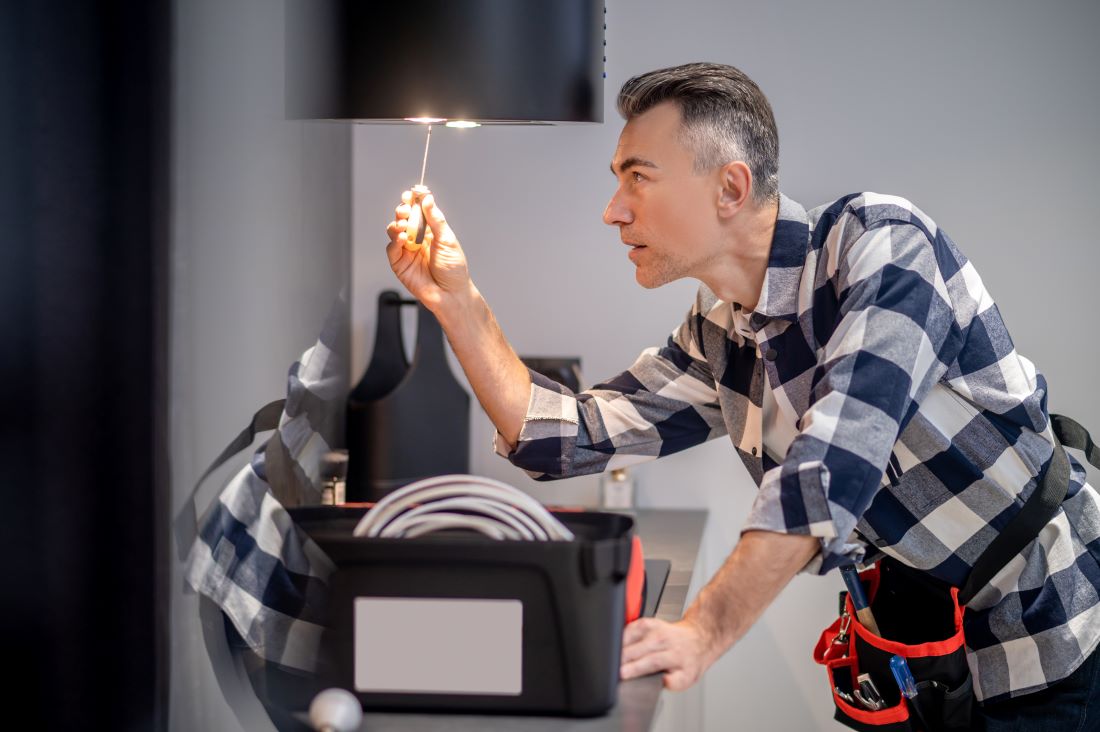
How to Ensure Electrical Safety at Home
Maintaining electrical safety at home is a critical aspect of ensuring a safe living environment for you and your family. Electrical accidents can have devastating consequences, from property damage to serious injuries and even fatalities. According to the Electrical Safety Foundation International, electrical fires account for over 50,000 home fires each year, resulting in hundreds of deaths and millions of dollars in property damage.
Ensuring electrical safety at home is crucial for preventing these types of accidents and creating a secure living space. In this comprehensive guide, we will explore the fundamentals of electrical safety, identify common electrical hazards, and provide practical tips to help you maintain a safe and well-functioning electrical system in your home.
Understanding Electrical Safety Basics
Electrical safety refers to the practices and measures taken to protect individuals from the dangers associated with the use of electrical energy. Electrical hazards can arise from a variety of sources, including faulty wiring, overloaded outlets, and damaged electrical cords.
Common electrical hazards at home include:
- Faulty or outdated wiring
- Overloaded outlets
- Frayed or damaged electrical cords
- Improperly grounded electrical systems
- Lack of ground fault circuit interrupters (GFCIs)
To ensure electrical safety at home, it’s essential to follow basic safety rules, such as:
- Avoid overloading outlets
- Keep electrical cords away from heat sources and high-traffic areas
- Regularly inspect electrical systems and appliances for signs of wear or damage
- Schedule professional electrical inspections and maintenance as needed
Regular electrical inspections and maintenance are crucial for identifying and addressing potential hazards before they can cause harm. Homeowners should consider having their electrical systems inspected by a licensed electrician every few years to ensure everything is up to code and functioning safely.
Identifying and Fixing Electrical Hazards
Recognizing electrical hazards is the first step in ensuring a safe home environment. Common signs of electrical issues include:
- Flickering or dimming lights
- Burning smells coming from outlets or switches
- Sparks or arcing from electrical outlets or appliances
- Frequently tripping circuit breakers or blown fuses
If you notice any of these warning signs, it’s essential to take immediate action to address the problem. Here are some steps you can take to fix common electrical hazards:
Replacing Faulty Wiring
Outdated or damaged wiring can pose a significant fire hazard and should be addressed promptly. If you suspect that your home has faulty wiring, it’s best to call a licensed electrician to assess the situation and make the necessary repairs.
Using Surge Protectors
Surge protectors can help safeguard your electrical devices from power surges and spikes, which can cause damage or even start fires. Make sure to use surge protectors with the appropriate voltage and amperage ratings for your specific appliances and electronics.
Performing DIY Electrical Safety Checks
As a homeowner, you can conduct some basic electrical safety checks on your own, such as:
- Inspecting outlets for signs of damage or overheating
- Checking electrical cords for fraying or damage
- Ensuring that all outlets and switches have proper covers
However, it’s important to remember that any major electrical work should be left to licensed professionals, as improper DIY repairs can be extremely dangerous.
Calling a Professional Electrician
If you encounter a serious electrical issue or are unsure about the safety of your home’s electrical system, it’s best to call a licensed electrician. Professionals have the expertise and tools to properly diagnose and address electrical problems, ensuring your home’s safety and compliance with local building codes.
Electrical Safety Tips for Specific Areas of the Home
Electrical safety considerations can vary depending on the specific area of the home. Let’s explore some key electrical safety tips for different rooms and outdoor spaces.
You may also read (top 5 firearm storage methods)
Kitchen Electrical Safety
- Avoid using electrical appliances near water sources, such as the sink or stove
- Ensure that all outlets in the kitchen are GFCI (ground fault circuit interrupter) protected
- Keep electrical cords away from heat sources and high-traffic areas
- Unplug small appliances when not in use
Bathroom Electrical Safety
- Never use electrical appliances (e.g., hair dryers, curling irons) near water
- Ensure that all outlets in the bathroom are GFCI protected
- Avoid storing electrical devices in the bathroom, as moisture can be a hazard
Bedroom Electrical Safety
- Avoid using electrical appliances near the bed, as they can pose a fire hazard
- Use surge protectors to safeguard electronic devices
- Keep electrical cords out of high-traffic areas to prevent tripping hazards
Outdoor Electrical Safety
- Use only weather-resistant, outdoor-rated electrical devices and extension cords
- Ensure that outdoor outlets are GFCI protected to prevent electric shock
- Avoid using electrical appliances near water sources, such as pools or hot tubs
By addressing electrical safety considerations in each area of your home, you can significantly reduce the risk of accidents and ensure a safe living environment for you and your family.
Electrical Safety for Specific Appliances and Devices
Electrical safety extends beyond the overall electrical system in your home – it also applies to the various appliances and devices you use on a daily basis. Let’s explore some key electrical safety tips for different types of electrical equipment.
Major Appliances
- Ensure that major appliances, such as refrigerators, washing machines, and dryers, are properly grounded and plugged into dedicated circuits
- Regularly inspect the cords and connections of these appliances for signs of wear or damage
- Consider unplugging major appliances when not in use, especially during storms or power outages
Small Appliances
- Use small appliances, such as toasters, blenders, and hair dryers, only for their intended purpose
- Avoid using small appliances near water sources, and unplug them when not in use
- Replace any small appliances with frayed or damaged cords
Electronic Devices
- Use surge protectors to safeguard your electronic devices, such as computers, televisions, and smartphones
- Avoid overloading outlets with multiple devices
- Ensure that all electronic devices are properly grounded and plugged into appropriate outlets
Holiday Lights and Decorations
- Use only outdoor-rated extension cords and electrical decorations for outdoor use
- Inspect cords and lights for any signs of damage before use
- Avoid overloading outlets with too many holiday lights or decorations
By following these specific electrical safety guidelines for various appliances and devices, you can further reduce the risk of electrical accidents and ensure the overall safety of your home.
Conclusion
Maintaining electrical safety at home is a crucial responsibility for every homeowner. By understanding the basics of electrical safety, identifying and addressing potential hazards, and implementing safety measures in specific areas and with specific appliances, you can create a safer living environment for you and your family.
Remember, electrical safety is not something to be taken lightly. Regularly inspecting your home’s electrical system, addressing any issues promptly, and calling in professional help when needed can go a long way in preventing accidents and ensuring your family’s well-being.
Take the time to review the electrical safety tips and recommendations outlined in this guide, and make a commitment to prioritizing electrical safety in your home. By doing so, you’ll not only protect your loved ones but also safeguard your property and investment.
You may also read (importance home safety for seniors)


